Listen to this article
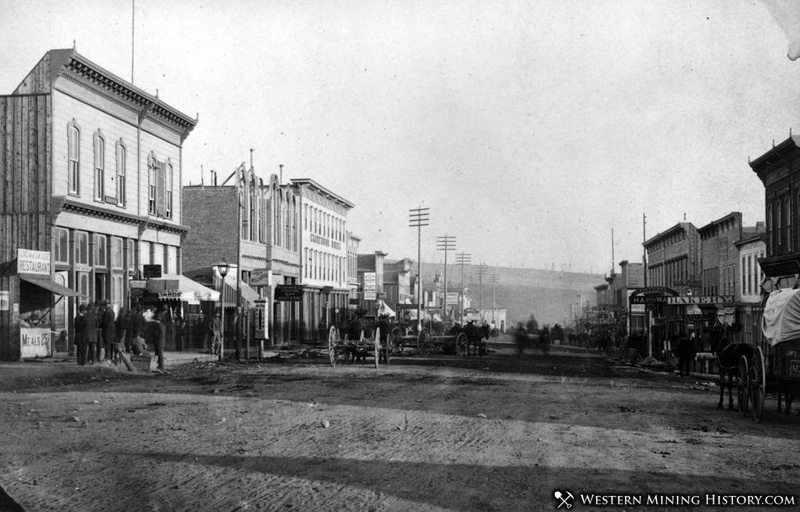
(Image from WesternMiningHistory.com)
The City of Leadville was founded in much the same way as many Colorado mining towns in the mid-19th century: with the discovery of gold. The Pikes Peak Gold Rush or Colorado Gold Rush brought prospectors to the area where they founded a town called Oro City. Unfortunately, the gold in this “gold city” quickly ran out and the town all but disappeared. However, the miners discovered a high silver content in the sand of the Arkansas river and traced its source back to the nearby area that is now present-day Leadville. There they discovered heavy silver deposits and by 1877, Horace Tabor and August Meyer founded the town of Leadville and the Colorado Silver Boom began.
Over the next decade, Leadville grew to be a hub for the wealthiest members of Colorado society and was even a frequent haunt of famous personalities such as Oscar Wilde, Margaret “Molly” Brown and John Henry “Doc” Holliday. Horace Tabor became known as the “Leadville Silver King” as Leadville gained the reputation as “the richest city in the world,” though the nickname was more a comment on Leadville’s quick rise to fame than an actual statement of worth. However, the city’s prosperity was not to last. The Sherman Silver Purchase Act caused the Panic of 1893, and the value of silver suddenly plummeted. Many of Leadville’s wealthy mining residents, including Horace Tabor, lost their fortunes practically overnight, and the town fell on very hard times.
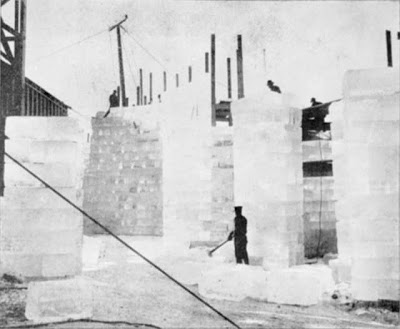
(Image from Denver Public Library)
In 1895, with many of Leadville’s businesses facing bankruptcy, the town’s leaders proposed a dramatic and risky idea for a major winter carnival to draw tourists and business back to the town and keep Leadville’s remaining residents in town for the winter. The centerpiece of the carnival would be a giant, crystal palace constructed out of solid blocks of ice and large enough to house all the events of the carnival. Because Leadville stood at over 10,000 feet and often had snow year-round, town leaders believed that, placed properly, the Crystal palace could also remain all year and become a permanent community structure and tourist attraction. The carnival organizers hired architect Charles E. Jay, who had designed the ice castle for Saint Paul, Minnesota’s winter carnival.
Through funding and support from the town’s business owners, as well as project manager, Tingley S. Wood, construction of the Crystal Palace began on November 1, 1895. It took a crew of over 250 men working day and night to construct the palace’s timber and metal framework and haul its over 5,000 tons of ice in from Palmer Lake. The ice was the shaped, shaved, and stacked to give the Crystal Palace the appearance of having been built entirely from ice. The ice walls were then sprayed down with water to freeze the blocks together and act as a kind of mortar. After only 36 days, the Crystal Palace was complete. Its towers reached over 90 feet high and 40 feet wide and enclosed over 58,000 square feet on over 5 acres of ground. It was a masterpiece.
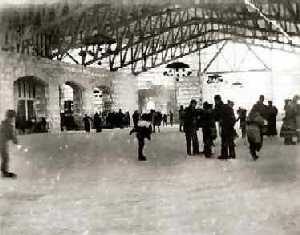
(Image from LegendsOfAmerica.com)
The Palace included a 20-foot wide promenade, a ballroom, a skating rink, and even a restaurant that displayed its dishes frozen in blocks of ice as part of the structure. Builders had also frozen electric lights into the walls of the palace so that it appeared to sparkle and glow. On January 1,1896, the winter carnival began and the Ice Palace was officially opened to the public as more than 2,000 visitors arrived in town to marvel at the structure. Admission to the Palace was 50 cents for adults and 25 cents for children and included use of the ballroom and skating rink. Season tickets were also made available, so that town residents and frequent visitors could use the Palace again and again. The Palace appeared to be a tremendous success and local railroads even promoted the attraction with special routes and group rates.
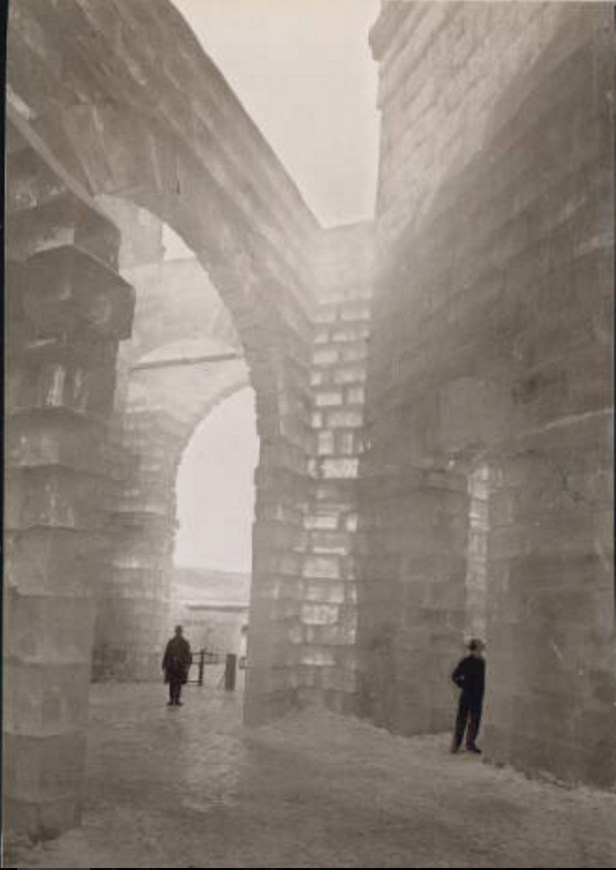
(Image from Denver Public Library)
For the next nearly three months, the Crystal Carnival hosted more than 250,000 visitors and events ranging from skating competitions to stock exchanges. However, March of 1896 brought unseasonably warm temperatures and attendance at the Carnival fell dramatically. By the end of March, the Palace had begun to melt, and there appeared to be no way to save it. On March 28th, 1896, theCarnival hosted its last official ceremony in the Palace and as the hopes of making it a permanent fixture of the town disappeared. Though it had drawn many visitors and gained a tremendous amount of publicity for the town, investors in the Crystal Carnival and Palace took a significant loss on their investment and had no intention of trying to repeat the event. In October of 1896, the last remaining parts of the Crystal Palace were demolished. Today, Ice Palace Park stands on the land where the Crystal Palace once was and though there was talk of reviving the Carnival and Palace in the 1980’s, high cost projections prevented any serious investment in the idea. Instead, the Carnival and Palace remain only a memory in the now comfortably thriving mountain town of Leadville, Colorado.
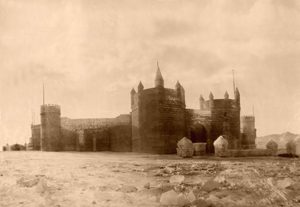
(Image from LegendsOfAmerica.com)
Historic Newspaper Articles About Leadville’s Crystal Palace
- Notes from the Palace Leadville Daily and Evening Chronicle December 6, 1895
- Old Sol Cant Injure It Leadville Daily and Evening Chronicle December 13, 1895
- Beautiful Beyond Compare Leadville Daily and Evening Chronicle December 14, 1895
- Cold Facts of the Palace Leadville Daily and Evening Chronicle December 19, 1895
- The Leadville Ice Palace Colorado Transcript January 1, 1896
- Ice Palace Not Finished Aspen Weekly Times January 4, 1896
- In Our Yard Leadville Daily and Evening Chronicle January 4, 1896
- Our Palace is Open to the World Leadville Daily and Evening Chronicle January 6, 1896
- For the Ice Palace Aspen Weekly Times January 11, 1896
- Ice Palace Rates Littleton Independent January 17, 1896
- Governor at the Palace Leadville Daily and Evening Chronicle January 17, 1896
- The King and the Governor Leadville Daily and Evening Chronicle January 18, 1896
- Aspenites Owned the City Leadville Daily and Evening Chronicle January 21, 1896
Illustrations
- Topics in History: Intersectionality in Colorado: Women’s Rights are Human Rights - March 15, 2019
- Black History is Colorado History - February 22, 2019
- Celebrating Black Voices with the Book Club Resource - February 15, 2019